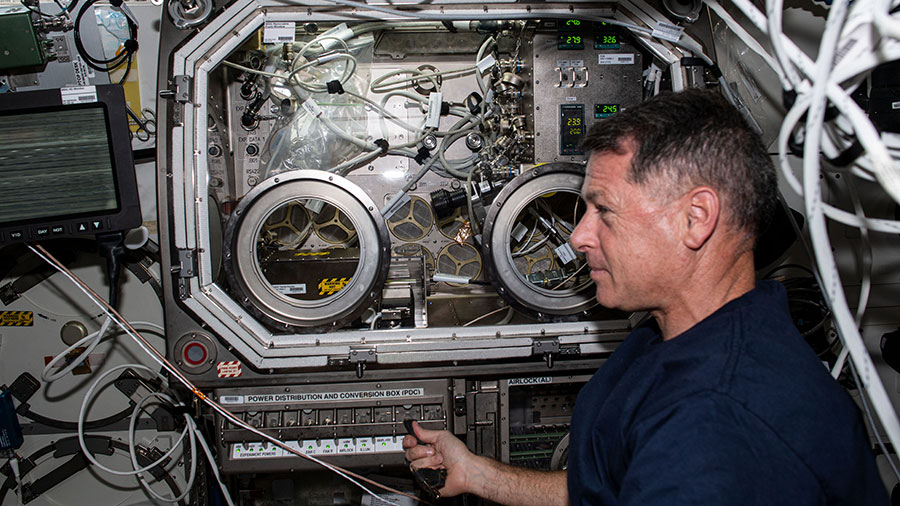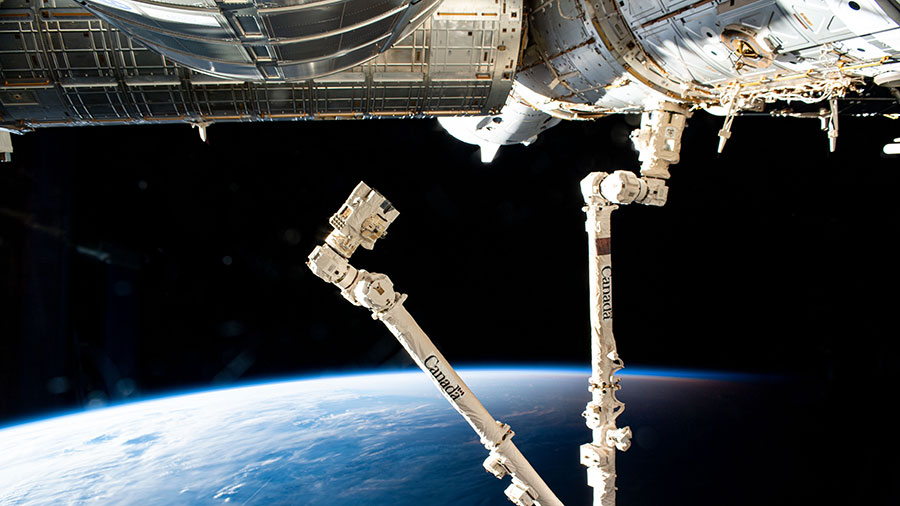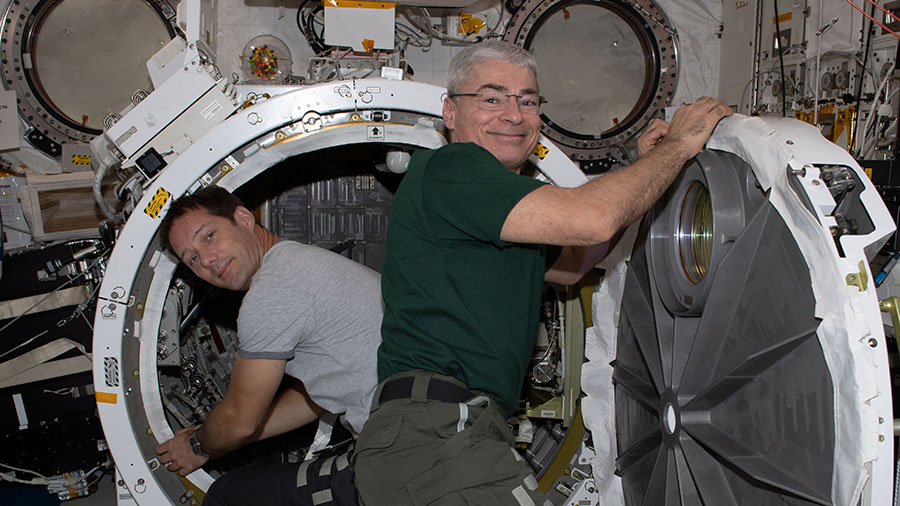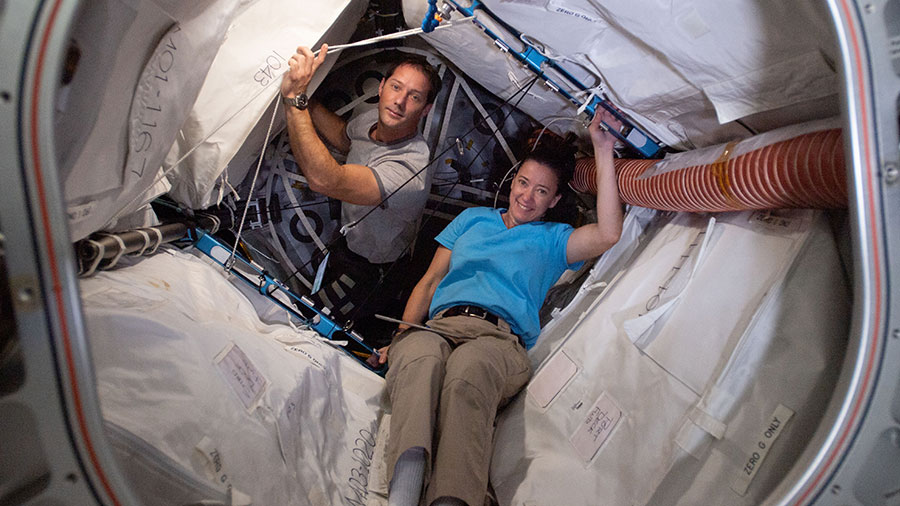Crew Starts Week on Biology, Plumbing and Spacewalk Preps

The Expedition 65 crew started the workweek on space biology and orbital plumbing aboard the International Space Station. Meanwhile, two cosmonauts are also gearing up for their first career spacewalks set to begin next week.
The immune system, protein crystals and cell biology dominated the science schedule aboard the orbital lab today. The space life science studies help scientists understand how microgravity affects a multitude of organisms while offering insights into treatments for humans on and off the Earth.
NASA Flight Engineer Megan McArthur once again treated donor samples inside the Life Science Glovebox for the Celestial Immunity study. Afterward, she inserted those samples into a science freezer for later analysis on the station and back on Earth. Observations may help doctors improve vaccines and treatments for diseases on Earth.
Flight Engineer Thomas Pesquet of ESA (European Space Agency) serviced protein crystal samples then placed them into an incubator for the Real-Time Protein Crystal Growth experiment. Results have implications for biotechnology and pharmaceutical companies and may advance the commercialization of space.
Station Commander Akihiko Hoshide opened up the Cell Biology Experiment Facility (CBEF) this morning and temporarily removed a centrifuge to check the research device’s connections. Located in the Kibo laboratory module, the CBEF is an incubator with an artificial gravity generator.
NASA astronauts Shane Kimbrough and Mark Vande Hei partnered together on Monday to assemble and install a brand new space toilet in the Tranquility module. The station’s newest bathroom was delivered in February aboard the Cygnus space freighter from Northrop Grumman.
The next spacewalk for maintenance at the orbital lab is scheduled for June 2. Roscosmos Flight Engineers Oleg Novitskiy and Pyotr Dubrov will open the hatch to the Poisk module at 1:20 a.m. EDT and exit into the vacuum of space wearing their Orlan spacesuits. The duo will then spend about six-and-a-half hours working on Russian hardware and installing science experiments.
Mark Garcia
Powered by WPeMatico







